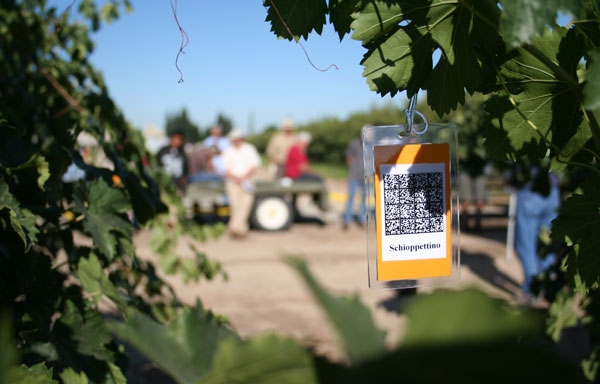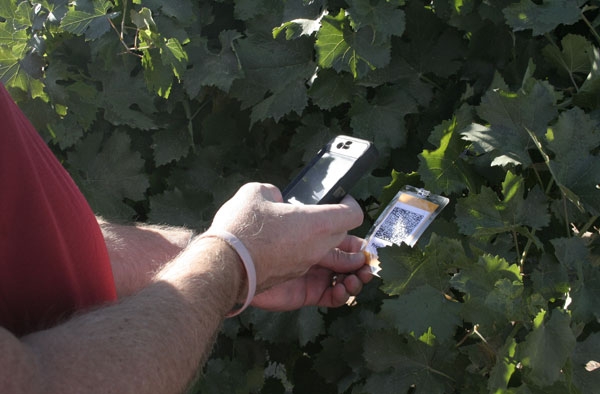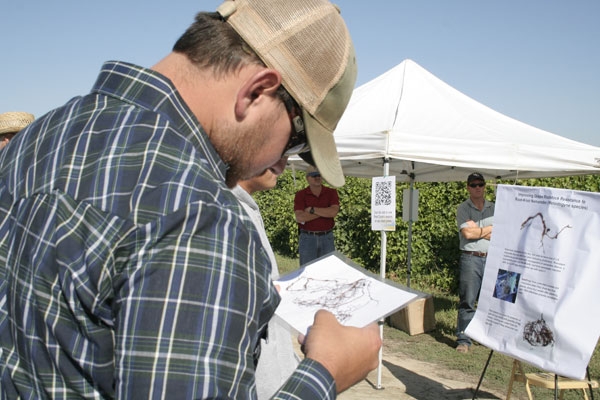
The research aims to give vintners blending varieties that will make San Joaquin Valley wines with familiar names more interesting. Vintners may use up to a quarter of their grape volume to impart distinctive color, flavor and structure to a varietal wine without calling it a blend. Grapes being studied at Kearney may one day add a certain flavor note - such as cherry, tannin, black pepper or citrus - to fine San Joaquin Valley wine.

"High levels of color and tannin cannot compensate for a variety whose yield is far below the economic threshold," Wolpert said.
At another stop on the Grape Day tour, UC Cooperative Extension viticulture farm advisor Mark Battany demonstrated the "Paso Panel." Battany developed the tool - composed of an inexpensive, lightweight solar panel and digital meter mounted on an aluminum frame - to help farmers fine tune their irrigation scheduling.
The Paso Panel allows farmers and researchers to quickly and easily calculate the amount of canopy shade in a vineyard or a vineyard row. The data can be combined with climate data to calculate crop water needs.
Measuring soil moisture and using plant-based monitoring systems are other ways to determine plant water needs, but Battany said currently climate-based methods are underused.
"A lot of farmers guess when they need to irrigate," Battany said. "People tend to guess on the conservative side, and put on more water than necessary."

New York-based USDA-ARS plant breeder Peter Cousins was also at the field day to explain his grape root stock variety trials planted at the Kearney Agricultural Research and Extension Center. Cousins and his staff screen 3,000 to 4,000 seedlings a year. The best prospects are sent to California, where 140 experimental root stocks are growing.
"Here at Kearney, the vines grow so vigorously, we can get more than 100 cuttings per plant," said Cousins. "This is their last stop, where we determine whether you can grow them in a field and make wood that propagates vines."